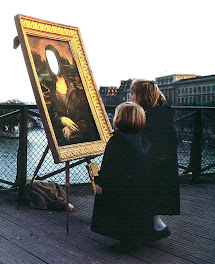¿Por qué es una buena idea cerrar espacios públicos?
"...only drastic action could prevent the spread of influenza throughout the city. Banning public meetings, closing businesses and schools, imposing and absolute quarantine on the Navy Yard and on civilian case--all these things made sense...But Plummer was Lewis's commanding officer. He and Krusen wanted to wait. Both feared that taking any such steps might cause panic and interfere with the war effort. Keeping the public calm was their goal...
The meeting ended with nothing decided except to monitor developments. Krusen did promise to start a mass publicity campaign against coughing, spitting and sneezing. Even that would take days to organize. And it would conflict with the downplaying of danger by Krusen and navy officials...
Meanwhile the Evening Bulletin assured its readers that influenza posed no danger, was as old as history, and was usually accompanied by great miasma, foul air, and plagues of insects, none of which were occurring in Philadelphia...
The next day two sailors died of influenza. Krusen opened the Municipal Hospital for Contagious Diseases to the navy, and Plummer declared, "The disease has about reached its crest. We believe the situation is well in hand. From now on the disease will decrease".
Krusen insisted to reporters that the dead were not victims of an epidemic; he said that they had died of influenza but insisted it was only "old-fashioned influenza or grip". The next day fourteen sailors died. So did the first civilian, "an unidentified Italian" at Philadelphia General Hospital...
Seven days later, on September 28, a great Liberty Loan parade, designed to sell millions of dollars of war bonds, was scheduled. Weeks of organizing had gone into the event, and it was to be the greatest event in Philadelphia history, with thousands marching in it and hundreds of thousands expected to watch it.
Two days after Philadelphia's Liberty Loan parade, Wilmer Krusen had issued that somber statement, that the epidemic in the civilian population "was assuming the type found in naval stations and cantonments".
Influenza was indeed exploding in the city. Within seventy-two hours after the parade, every single bed in each of the city's thirty-one hospitals was filled. And people began dying. Hospitals began refusing to accept patients--with nurses turning down $100 bribes--without a doctor's of a police order. Yet people queued up to get in. One woman remembered her neighbors going "to the closest hospital, the Pennsylvania Hospital at 5th and Lombard but when they got there there were lines and no doctors available and no medicine available. So they went home, those that were strong enough".
On October 1, the third day after the parade, the epidemic killed more that one hundred people--117--in a single day. The number would double, triple,quadruple, quintuple, sextuple. Soon the daily death toll from influenza alone would exceed the city's average weekly death toll from all causes--all illness, all accidents, all criminal acts combined.
On October 3, only five days after Krusen had let the parade proceed, he banned all public meeting in the city--including, finally, further Liberty Loan gatherings--and closed all churches, schools, theaters. Even public funerals were prohibited.
The first temporary facility to care for the sick was set up at Holmesburg, the city's poorhouse. It was called "Emergency Hospital #1"; the Board of Health knew more would follow. Its five hundred beds were filled in a day. Ultimately there would be twelve similar large hospitals run with city help...
In ten days--ten days!--the epidemic had exploded from a few hundred civilian cases and one or two deaths a day to hundreds of thousands ill and hundreds of deaths each day.



No hay comentarios.:
Publicar un comentario